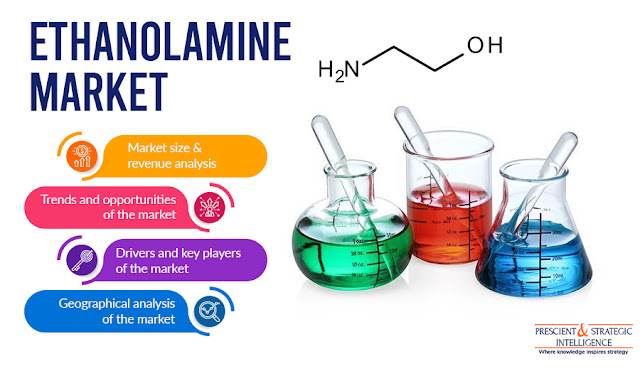
How Will Growing Personal Care Sector Facilitate Ethanolamine Production?
The burgeoning demand for personal care products, such as laundry detergents, soap bars, and shampoos, on account of the mounting disposable income of people and increasing availability of such products, will create a huge requirement for ethanolamines in the foreseeable future. Personal care product companies use this chemical as an emulsifying ingredient and surfactant. The Organisation for Economic Co-operation and Development (OECD) states that the per capita gross adjusted disposable income of Australia and the European Union (EU) stood at $42,700 and $33,445, respectively, in 2020.
Thus, the rising need for personal care products, on account of the escalating awareness consciousness and disposable income, will help the ethanolamines market progress at a CAGR of 5% during 2020–2030. According to P&S Intelligence, the market revenue will grow from $2,933.5 million in 2019 to $5,079.0 million by 2030. In contemporary times, diethanolamine (DEA) is preferred over monoethanolamine (MEA) and triethanolamine (TEA) due to the large-scale application of DEA in the production of glyphosate, soaps and detergents, herbicides, and surfactants and the treatment of natural gas and petroleum products.
Globally, the Asia-Pacific (APAC) region dominated the ethanolamines market in the preceding years, and it is expected to keep on the path in the foreseeable future. This can be majorly ascribed to the booming end-use industries in Vietnam, India, and Thailand owing to the abundant availability of affordable raw materials and labor in these countries. Additionally, the manufacturing sector of China consumes a notable volume of ethanolamines, which are primarily imported into the country from Thailand and Saudi Arabia.
Furthermore, the Rest of the World (RoW) is expected to adopt a considerable volume of ethanolamines in the forthcoming years due to the increasing construction of new production plants in Saudi Arabia and Brazil. Moreover, the expanding capacity of existing manufacturing facilities, to meet the burgeoning demand for finished products, will augment the consumption of this class of chemical in these countries, as will the rising penetration of ethanolamine producers in the region.
Thus, the soaring demand for personal care products and increasing requirement for agrochemicals will facilitate the production of ethanolamines in the upcoming years.
Comments